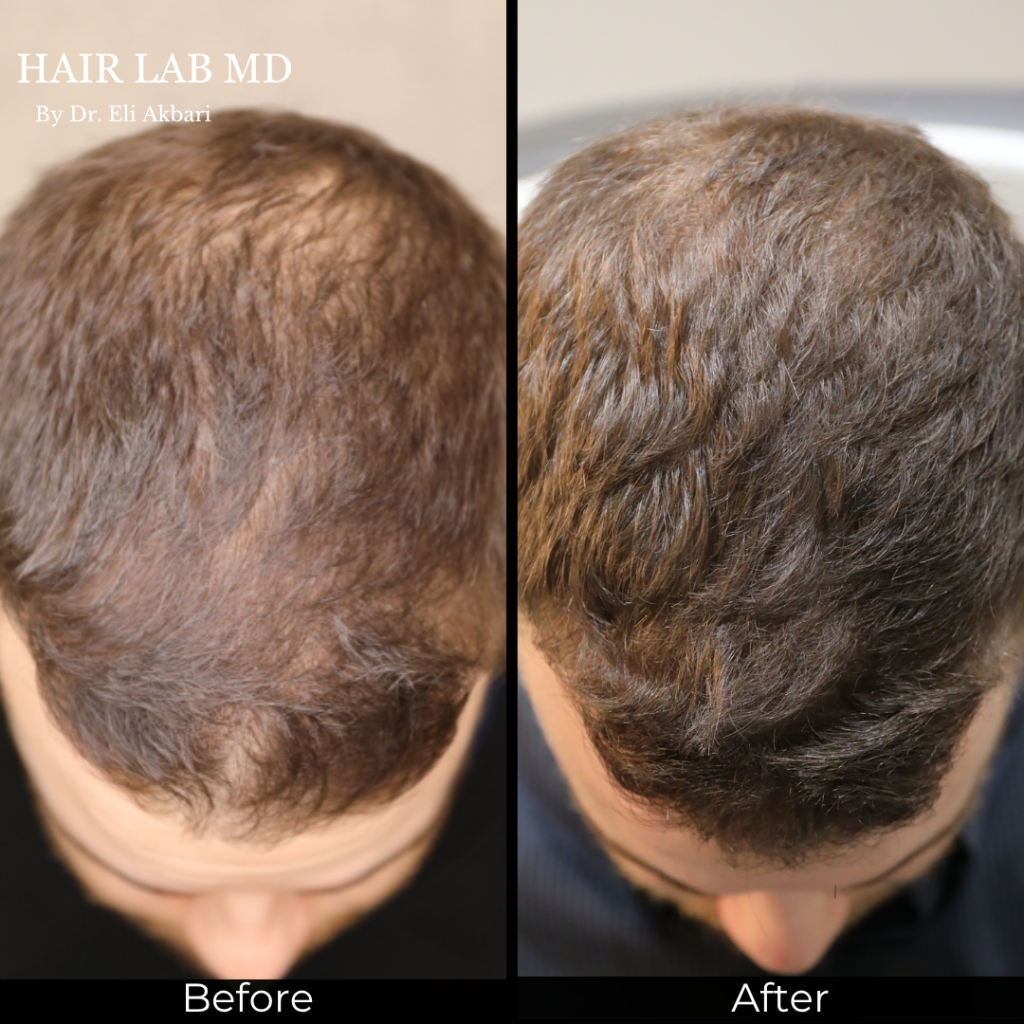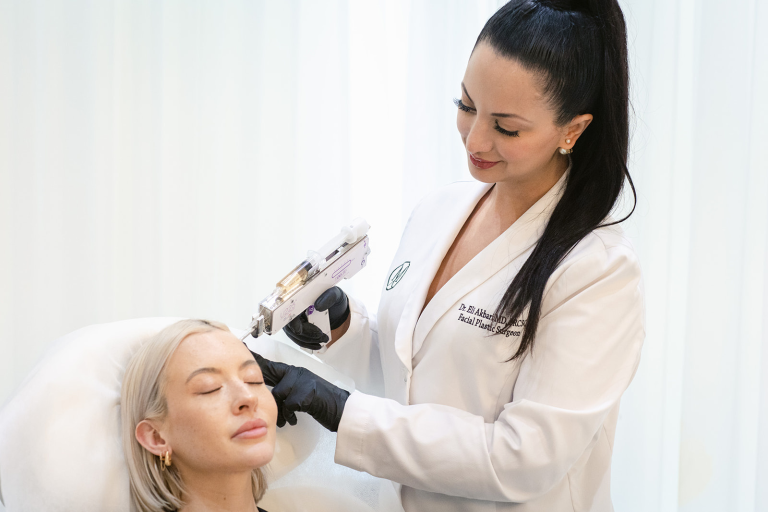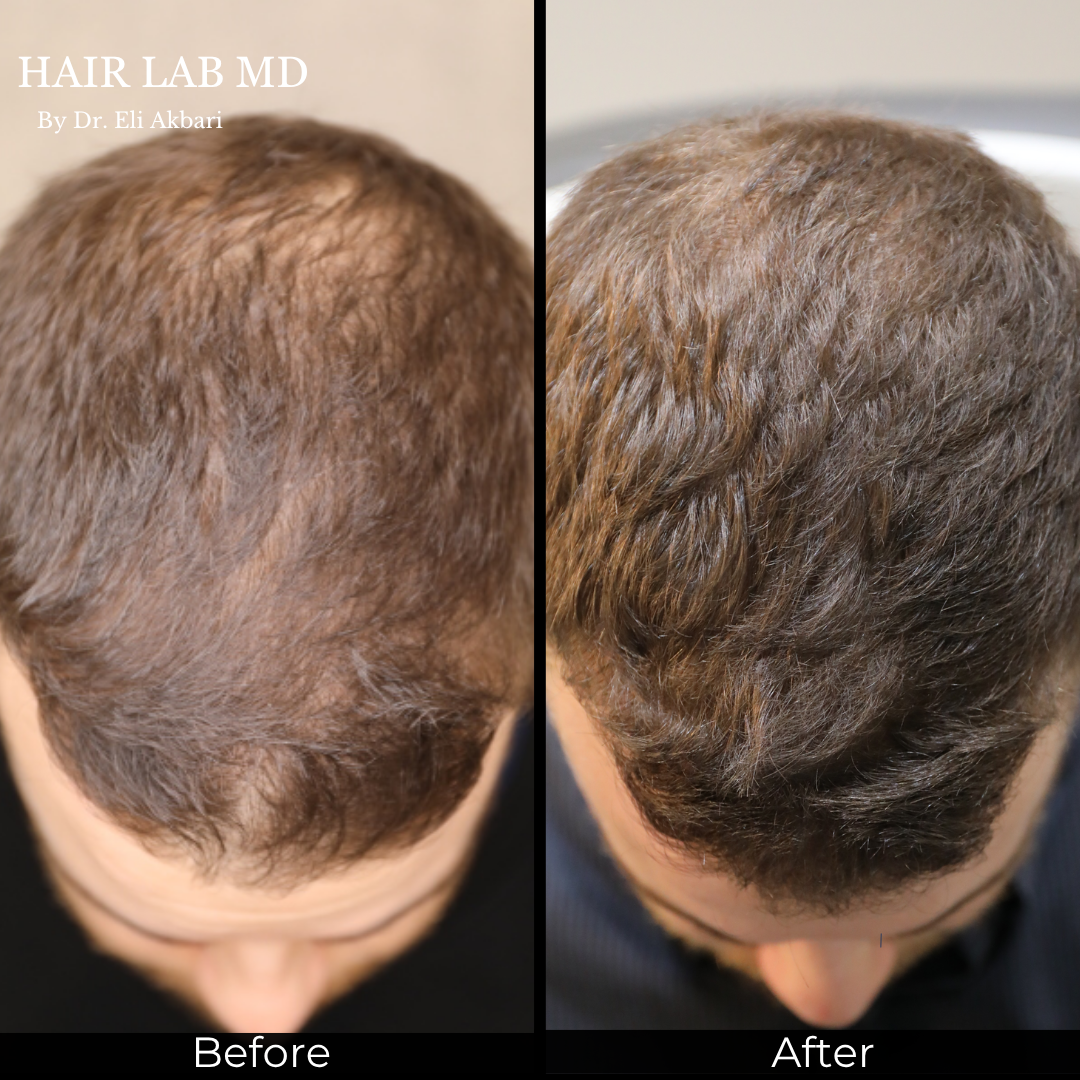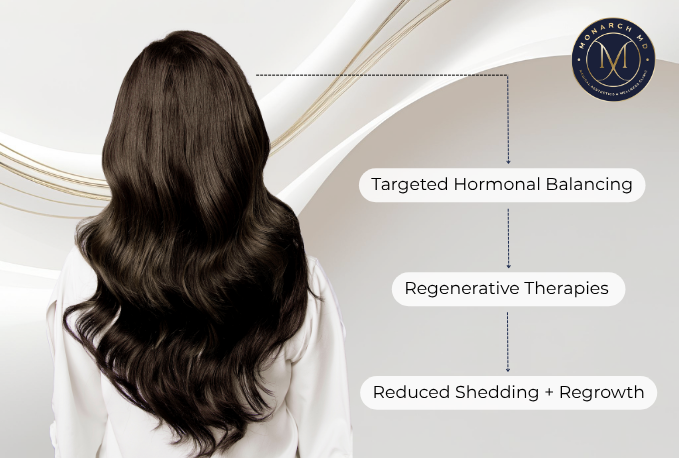Why start with non-surgical therapy before considering a transplant?
Stabilizing active loss and re-activating dormant follicles first means you keep more native hair,
improve scalp quality, and may generate enough regrowth to delay or cancel surgery. If you still
choose a transplant later, the grafts have a healthier foundation.
How soon will I see visible changes?
Individual results vary, however the following are based on the average response to our treatments. Shedding slows in 4–8 weeks. Early density gains typically appear at month 3-4. Significant cosmetic
improvement is measured between months 6 and 12, with yearly maintenance to lock it in.
Do the treatments hurt or require downtime?
Pain is very minimal, with most patients describing it as 2/10 on the pain scale. Laughing gas (nitrous oxide) can be provided if needed, at no additional charge.
Most clients are able to return to the office immediately after any of our hair treatments.
Which medications or topicals do you combine with the protocol?
Plans often include oral finasteride or dutasteride, topical minoxidil variations, and targeted
anti-androgen serums. Your exact stack is prescribed after bloodwork and scalp imaging.
What’s the investment compared with surgery?
A full non-surgical course is typically 15–25 % of Vancouver transplant pricing. Because it preserves
existing density, many clients avoid a second transplant down the line, saving even more.
How do I track progress to be sure it’s working?
We take detailed macro photography and trichoscopy photos at your hair analysis appointment, and then 3 months after your last treatment. We measure hair counts, shaft caliber, and
growth rate, then place results side by side so you see objective gains.
Stabilizes active shedding so you keep the hair you still have.
Reactivates dormant follicles for natural density gains.
Significant regrowth potential, most clients skip surgery entirely.
Costs a fraction of surgery and keeps your options open.
Works alongside prescription medications and topical programs for a complete plan.








